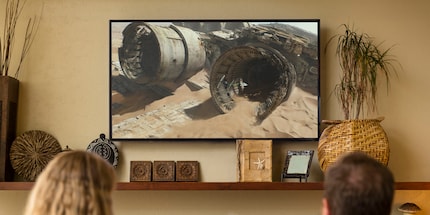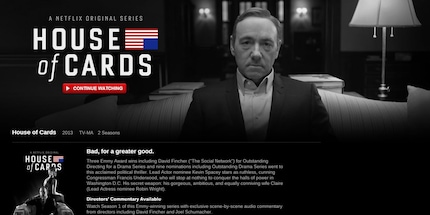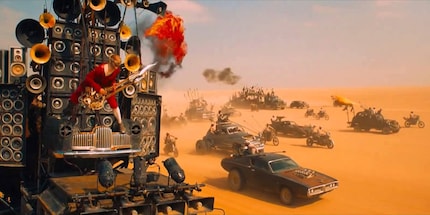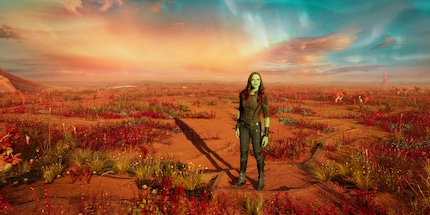
Background information
Vivid colours for your TV - Everything you need to know about HDR technology!
by Luca Fontana

Size matters. Especially when it comes to home cinema Having a big screen in your living room is worth it, now more than ever. Let me tell you why.
Large screens are all the rage. By "big", we mean 55 inches minimum. 65-inch televisions are very popular, and 75-inch televisions have made great strides. Is this a coincidence? Of course not! The many disadvantages that used to dissuade us from buying one of these 'monsters' are now obsolete. "I don't want that big thing in my living room," you say. Have you seen the design of the new generation of televisions? I know, it's a matter of taste, but such a beautiful object can afford to be bulky, can't it? You'll certainly be the envy of your friends and family when they see how much fun you're having watching your favourite series.
.
And that's not all, you'd think. In this article, I give you three reasons to upgrade to the ultimate class: 4K Ultra HD resolution and HDR. What's the third reason, you ask? Read on...

When the first HD TVs conquered the market, the increase in picture quality - from standard definition (SD) to Full HD - was so sudden that we couldn't imagine even sharper screens. At first, there was a lack of high-resolution image sources (we generally only had Blu-Ray), but then Full HD quickly became part of ordinary TV programmes. The next innovation - 4K Ultra HD (UHD) - followed right behind.
As is often the case, manufacturers were unable to agree on a universal term. So there are two perfect synonyms: '4K' and 'UHD'. I've used '4K Ultra HD' up to now for the sake of clarity, but I'll just use '4K' below. This is a resolution of 3840 × 2160 pixels, 8 million pixels in total. By comparison, Full HD offers a resolution of 1920 × 1080 pixels, which comes to over 2 million pixels. Advertisements (and my article) often consider a resolution four times higher as equal to 4K, which is not quite right. 4K is really 4096 × 2160 pixels, which is almost 9 million pixels. Until now, this has been a standard reserved for cinemas. In any case, the transition from Full HD to 4K is obvious.

4K is noticeable on large screens of at least 55 inches and unleashes its full potential on 65-inch TVs, the big market trend. Avoid all 65-inch screens that don't support 4K. There's no point in subjecting yourself to this poor picture quality. And if, with your nose in a 75-inch 4K screen without detecting a single pixel, you're not completely blown away, there's nothing more I can do for you...
The big screen craze didn't happen by accident; their high resolution has another side effect... You no longer need to worry about how far away you sit, even in front of the 'monsters' of the genre. In fact, for Full HD screens, you need to multiply the diagonal of the image by 2.5 to determine the optimum distance at which to stand. This figure drops to 1.5 for 4K televisions. Here's a little calculation example (are you still following me?): imagine you buy a nice 75-inch screen. What's the optimum distance to respect? 190 cm (75 inches) * 1.5 = 2.85 m. Doing the same calculation for a Full HD TV, you would have ended up with a distance of almost 5m. Clearly not the same thing! So 4K televisions allow you to sit closer, despite their size. "Mad Max: Fury Road" occupies almost your entire field of vision. And all without moving from your living room!

There's one topic that's got the TV industry talking even more than 4K: 'High Dynamic Range', or HDR, technology. This technology produces images with an extremely high level of contrast that makes details much sharper than ordinary images. HDR images contain more colours than we are used to: 16.7 million colours compared with 69 billion (!). But what do these countless colours give us?
The human eye perceives far more degrees of clarity than the most modern monitors are capable of displaying. The more colours and degrees of clarity a television displays, the closer it is to the image actually perceived by our eyes. The colours certainly become more powerful or more saturated, but above all more natural, and this even if we don't differentiate (at least consciously) 69 billion colours.

You may be familiar with the term "HDR" in photography. Cameras with this technology take three images almost simultaneously: one is underexposed, the second normal and the third overexposed. These three shots are then combined into a single high-contrast, detailed image, with colours that are even more intense yet still natural.
The process is of course slightly different when it comes to televisions. Contrast intensity is defined by the difference between the darkest and lightest areas of the picture. The greater this difference, the wider the range of luminosities and colours between the two areas. Two approaches can be used: seeking maximum clarity or the most intense black possible. OLED screens are renowned for their black intensity, and their manufacturers boast a maximum of 0.0005 nit (extremely deep black). Compared with OLED screens, LCD screens have the advantage of a higher maximum brightness. It's up to you to see which option you prefer.
I promised to give you a third reason to opt for big-screen TVs. Allow me to do a little advertising for us. Yes, well, if we can help each other, after all...
For a small fee, our assembly and delivery service will not only take care of transporting your big-screen TV and getting rid of its packing carton, but will mount it wherever you want it. If a 65-inch screen impresses you at first glance, what can you say about its huge packaging? Anyway, I was delighted that I didn't have to strain or mount my 65-inch LG OLED TV on my wall. And the editors took care of picking up all the rubbish. Nice!
It's only a tiny investment compared to the price the TV costs. And I find it well worth it.
To sum up, thanks to their very high contrast levels, HDR TVs display more colour and detail than ordinary TVs. And to enjoy all the detail visible thanks to this technology, buy a large screen. On a smaller screen, the images will still be beautiful, but the HDR colours won't be as intense. Nor will you perceive their vast palette, which really impresses on a big screen.
And if you want the full cinema experience in your living room, opt for a screen larger than 55 inches. Small flat? No problem. Thanks to the resolution offered by 4K, you can sit very close to a 65" or 75" screen, without this diminishing your viewing pleasure. Quite the opposite, in fact! Just like at the cinema, the image will occupy your entire visual field, and you'll remain glued to the screen.
In short, size matters.
Here you'll find a small selection of devices at great prices:
Here you'll find all our TVs with screens of at least (!) 55 inches.
I write about technology as if it were cinema, and about films as if they were real life. Between bits and blockbusters, I’m after stories that move people, not just generate clicks. And yes – sometimes I listen to film scores louder than I probably should.
Interesting facts about products, behind-the-scenes looks at manufacturers and deep-dives on interesting people.
Show all